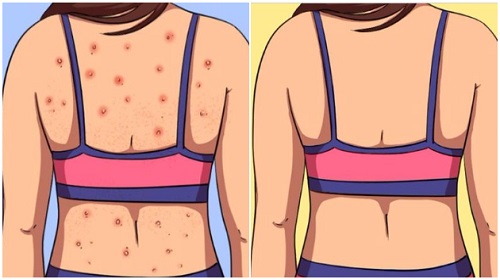How many days are children with chickenpox contagious, and how can you help prevent your child from scratching? Is it safe to bathe them, and what kind of food should you give them? What do you need to know when taking care of a child with chickenpox?
Chickenpox, also known as varicella, is one of the most common illnesses affecting children aged 2 to 8. The disease often spreads in childcare institutions, kindergartens, schools, and pediatric hospital wards, as it is a highly contagious disease that spreads rapidly through respiratory droplets or by contact with the infected person’s skin.
The incubation period of the virus lasts from 10 to 12 days, during which the infected person is contagious and can transmit the disease. In younger children, the first symptom indicating chickenpox is a rash on the body, while older children may experience fatigue, a feeling of heat, headache, joint pain, and muscle pain a day or two before the rash appears.

How to recognize the rash? The rash of chickenpox is characterized by the initial formation of red spots (macules). Which then develop into blisters (papules and vesicles) filled with fluid (serum). The rash first appears on the trunk, then on the neck, in the head area under the hair, and on the face. It may also appear on the tongue and genital areas. The rash comes in waves, and some children may have a more abundant rash, while others may have fewer lesions.
While the rash is present, children often experience elevated body temperature, and these symptoms can last for several days. After the fluid from the blister dries up, crusts begin to form on the body. Which then start to dry and fall off on their own, leaving only a slight depigmentation of the skin without scarring.

Usually, 2-3 days pass from the onset of the rash to its transformation into crusts. The child is contagious a week before the rash appears and until all the crusts on the body dry up, which is about 6-10 days after the onset. Typically, the doctor will examine the child and advise whether they can return to childcare or school.
If you notice large, red circles forming around some of the blisters, indicating a bacterial infection, it is necessary to consult a doctor immediately. Additionally, if children show signs of worsening conditions. Become disoriented, or refuse to drink fluids, it is a clear sign to seek immediate medical advice.
Bathing during chickenpox Showering with lukewarm water 2 to 3 times a day is advisable. As it helps cool the skin and reduce itching. After showering, gently pat the skin dry with a towel, avoiding rubbing and not breaking the blisters to prevent scarring. Bathing and immersion in a bathtub are not recommended.
What food should you give your child during chickenpox? As mentioned earlier, children with chickenpox may develop a rash in the mouth and genital areas, causing pain. Therefore, it is essential to pay attention to the food and drinks given to the child during this period. It is best to choose cold, soft foods or pureed meals without spices to prevent irritation in the mouth. Also, avoid acidic or salty foods and liquids.
ALSO READ: Exercises for Wrists for Those Who Spend a Majority of Their Day at a Keyboard



